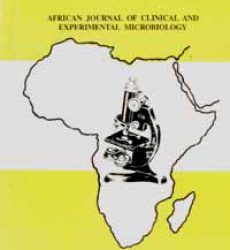Abstract
Mycobacterium tuberculosis is a major public health problem in globally due to its high tendency of person-person transmission, morbidity, and mortality. This study aimed at determining the prevalence of AAFB within the study area. Sputum samples were collected from three hundred and three (303) patients with suspected cases of pulmonary tuberculosis attending Plateau State Specialist Hospital and Faith Alive Foundation. The samples were examined using Ziehl Neelsen method. Structured questionnaires were administered to obtain some demographic data from patients that consented. Results were tested statistically for significance at p < 0.05 using Chi-square test. Out of the samples examined,29(9.57.0%) were positive for AAFB .The study showed that the prevalence of smear-positive increased with age between 15 and 45 and then decreased from age groups 46 and above. The study also revealed that males had a higher prevalence with 19(12.34%)than females who had 10(6.71% ).Marital status showed that divorced individuals had the highest prevalence of 2(12.50%) followed by married ,singles and the widowed with 18(11.76%),8(6.34%),and 1(5.90%) respectively. Statistically the study reveals that age groups, sex, hospital (location) does not have any effects on the prevalence (p > 0.05) while marital status showed a significant effect on the prevalence (p < 0.05).There is need for a more collaborative efforts and political will by the government and non-governmental agencies in order to fast track prevention and control measures aimed at eliminating the infection in the nearest future.
Key words: AFB, Tuberculosis, Jos, Nigeria.

